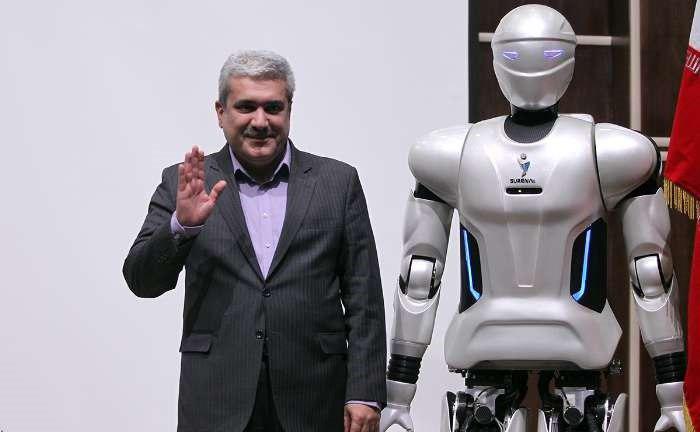The Iranian robot, developed under a project entitled the national grand plan on technology of the fourth-generation Iranian humanoid robot, can walk, talk, and maintain balance during the walk.
Sorena IV was unveiled on Saturday at a ceremony in the Mechanical Engineering Department of University of Tehran, attended by Iranian Vice-President for Science and Technology Sorena Sattari and Mayor of Tehran Pirooz Hanachi.
In an address to the event, Sattari said the process of designing and manufacturing Sorena IV is known as a groundbreaking project in such technological activities.
“The fields like artificial intelligence, mechanics and information technology will affect the future of the world,” the vice president noted, calling for efforts to promote those areas of science inside Iran.
In addition to the team that has manufactured Sorena IV, three other Iranian knowledge-based companies are working on social robots, which are based upon artificial intelligence, the vice president added, saying more Iranian robots are going to be unveiled soon.
Production of Sorena IV indicates that the social robots have become commercialized in Iran, the vice president added, saying robots are going to play a role in the daily life of people.
Sattari further unveiled plans for the commercialization of “Mini-Sorena”, a project for educational purposes at schools and research centers.
In separate comments at the unveiling ceremony, deputy of the Iranian Vice-President for Science and Technology for Innovation and Commercialization, Peiman Salehi, said the vice-presidency attaches great significance to the projects involving cutting-edge technologies, because such projects would meet the country’s current and future demands.
He also noted that Sorena IV is much more advanced than its previous versions in terms of human-robot interaction and smartness.
The newest Iranian humanoid robot can recognize and count human faces, recognize and detect the location of objects, analyze human movements, and also understand and respond to phrases, Salehi added, noting that Sorena IV is capable of picking up objects, tracking the human faces, and mimicking the movements of human by employing artificial intelligence.
For a brief review of Iran’s achievements in various fields of science and technology, check the book “Science and Technology in Iran: A Brief Review – 2019”
The Iranian researchers have used the 3D printing technologies to optimize the structure of Sorena IV, which is 1.7 meters high and weighs 68 kilograms.
Sorena IV is both shorter and lighter than its previous version, can grab objects with different shapes with an optimized hand design, and reaches a velocity of 0.7 km/h with dynamic path planning and online controllers.
The new Iranian humanoid robot can also walk on rough surfaces with the use of modern contact sensors developed by the Center of Advanced Systems and Technologies (CAST) at the University of Tehran.
